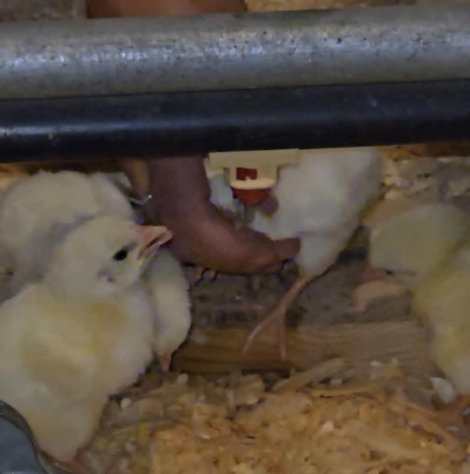Tips for bringing baby chicks home
Bringing home new chicks can be exciting—here are some tips to make sure your chicks get off to the best start!

This spring, many people will be adding to their homesteads by purchasing baby chicks from their local farm store or another source. Some will even order chicks directly from a hatchery and they will be delivered by the U.S. Postal Service. Chicks are delicate and require extra care during the first few weeks of life.
Here are some tips from Michigan State University Extension to help you be prepared to provide the best start you can to your new additions.
Brooders
Brooders are the chicks first home! The purpose of a brooder is to keep chicks warm because they are not able to regulate their own body temperature until they are 12- to 14-days old and they can be easily stressed by temperature fluctuations.
There is no right or wrong way to set up a brooder; you can use a large cardboard box, a plastic tub, section off floor space, or whatever works for your space. The essential elements of a brooder are that they are draft free, can be kept at a consistent temperature, and that there is adequate space for the chicks. If supplemental heat must be used, it is important to ensure that the heat source can be used safely.
Setting up your brooder at least 24 hours before you plan to introduce chicks is essential to ensure that the environmental temperature is stabilized and that any moisture from bedding can dissipate.
Here are some quick tips for a successful brooder:
- The brooder is large enough to have about 0.5 to 1 square foot of space per chick.
- Prepare your brooder with 3-4 inches of bedding that is absorbent and odor-free. Pinewood shavings or chopped straw work best.
- Use a heat lamp to keep temperatures between 92-95 degrees Fahrenheit. Keep heat lamps securely fastened to prevent them from falling and catching the bedding on fire.
- Keep a portable thermometer at chick level so that the brooder temperature can be monitored.
Feed and water
Chicks should have unlimited access to a fresh chick starter feed. There are several different brands at various price points. You may want to consider a medicated feed that protects against coccidiosis. As chicks grow and develop, their nutritional needs change; ensuring that the chicks are on the appropriate feed at the appropriate age is important. Learn more about this in an article by Jacquie Jacob, “Feeding chickens for egg production in small and backyard flocks.”
During the first day of brooding, you may have to “show” the chicks where to eat and drink. You can do this by gently placing the chick at the food or water source and touching their beak to the food or water.

Daily observation
Once your brooder is set up and your chicks have been introduced to the environment, feed and water, employing good management practices will help your chicks grow and thrive. Observe your chicks and their environment daily, if not several times per day, to make sure they are healthy and comfortable.
Observe behavior such as how close the chicks are to the heat lamp. If they are too cold, the chicks will be huddled together under the heat lamp, or if it is too warm, they will be as far away from the lamp as possible. If chicks are evenly spread out, engaging in their environment and with one another, they are likely comfortable, and the temperature is adequate. The temperature in the brooder should be decreased by 5 degrees Fahrenheit each week until the space is either 55 degrees or the same temperature as it is in the natural environment.
Also, make sure that they always have feed and water, as this is the single most important thing that you can do while chicks are growing. Always provide clean and fresh water and always place feeders and waterers away from the heat lamp. Be sure to clean the waterer daily and use a shallow waterer to make access easier for small chicks and prevent potential drownings.
Providing enough feeder and water space for chicks is also important. It is recommended that 1-2 linear inches of feeder space per chick during the first six weeks be provided. At week 7, space should increase to 4 linear inches of feeder space. Giving adequate feeder and waterer space reduces competition and allows all the chicks to have access to feed and water.
Follow good management practices
Poultry owners should always practice good management and biosecurity by washing their hands before and after handling chicks, not eating and drinking around birds, limiting visitors, and regularly cleaning and disinfecting feeders and waterers.
By following these simple tips your chicks will be off to an excellent start and should make a good addition to your homestead.
If you are interested in learning more about poultry farming, consider registering for the MSU Extension online course “Small Scale Poultry Farming.”



 Print
Print Email
Email


